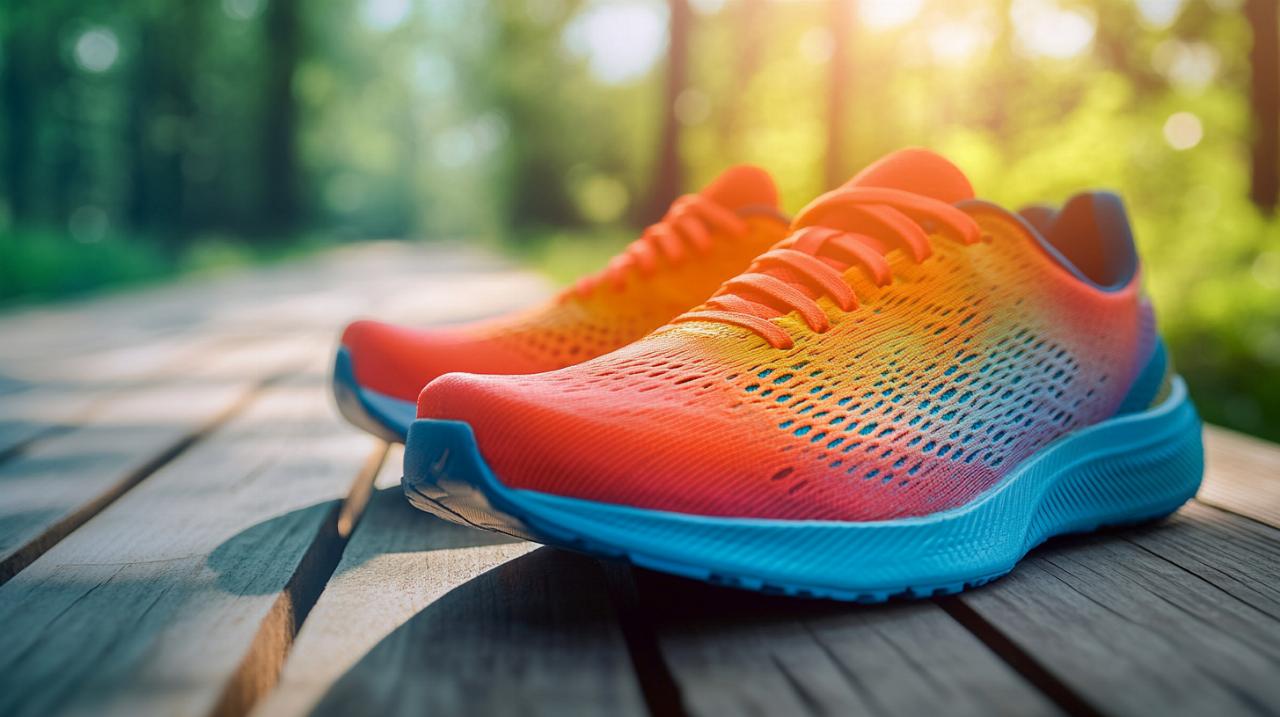Selecting the proper footwear for running can significantly enhance your performance and reduce the risk of injury, especially if you experience supination. This particular gait pattern requires careful consideration when choosing trainers, as the wrong pair can exacerbate existing issues and lead to discomfort. Understanding the mechanics of supination and what to look for in running shoes will help you make an informed decision that supports your unique biomechanics.
Understanding Supination and Its Impact on Your Running
Supination, also known as underpronation, occurs when the foot rolls outward during the running or walking gait cycle. This biomechanical pattern places excessive stress on the outer edge of the foot, leading to an uneven distribution of impact forces. For many runners, this can result in ankle pain, shin splints, and even stress fractures over time. The condition affects how your foot absorbs shock, which is why addressing it with the right footwear is essential. When the foot fails to pronate adequately, the natural cushioning mechanism is compromised, making every stride potentially more jarring to the joints and muscles. Recognising this issue early and taking corrective measures through proper shoe selection can make a substantial difference in your running experience.
Identifying the Signs of Supination Through Trainer Wear Patterns
One of the most straightforward methods to determine if you supinate is by examining the wear patterns on your existing trainers. If the outer edges of the sole show significantly more wear than the inner portions, this is a strong indicator of supination. Another helpful technique involves the wet test, where you dampen your foot and step onto a piece of paper or a surface that will show your footprint. Supinators typically leave a narrow imprint with minimal contact along the arch. Additionally, observing your gait while walking or running can reveal an outward roll of the foot. Many specialist running shops offer gait analysis services that use video technology to capture your stride, providing a clear picture of your foot biomechanics. These assessments can be invaluable for identifying supination and guiding you towards the most suitable footwear options. Resources such as compralab.es can also provide insights into various product reviews and comparisons that might help you understand different trainer models available on the market.
Why supinators need specialised footwear solutions
Supinators require trainers that compensate for the lack of natural shock absorption and support the foot’s tendency to roll outward. Without appropriate footwear, the risk of injuries increases, as the repetitive stress is not adequately managed. Standard running shoes designed for neutral runners or those with overpronation may not provide the necessary features to address underpronation. The key is to find trainers that enhance the foot’s natural movement while offering sufficient cushioning and flexibility. Proper footwear can help distribute impact forces more evenly, reducing strain on the ankles, knees, and hips. This is particularly important for individuals who run regularly or cover long distances, as the cumulative effect of poor shoe choice can lead to chronic pain and long-term injuries. Investing in the right trainers tailored to supination can transform your running routine, making it safer and more enjoyable.
Essential Features to Look for in Running Shoes for Supination
When shopping for trainers suited to supination, several critical features should guide your decision. The goal is to find footwear that supports your foot’s natural alignment while providing adequate protection against impact. Understanding these characteristics will help you narrow down your options and select a pair that meets your specific needs. The right combination of cushioning, flexibility, and support can make all the difference in preventing injuries and enhancing your overall running performance.
The Importance of Adequate Cushioning in the Midsole
Cushioning is perhaps the most vital element in running shoes for supinators. Since the foot does not roll inward sufficiently to absorb shock, the midsole must compensate for this deficiency. Trainers with generous cushioning, particularly in the heel area, help to soften the impact of each stride and protect the joints from excessive stress. High-quality midsole materials such as foam compounds are designed to compress upon landing and then spring back, providing both comfort and energy return. This feature is especially beneficial for runners who log high mileage or prefer longer runs, as it reduces fatigue and discomfort. Additionally, adequate cushioning can help prevent common injuries associated with supination, such as plantar fasciitis and stress fractures. When trying on trainers, pay close attention to how the shoe feels underfoot, ensuring that the cushioning provides a plush yet supportive sensation without feeling overly soft or unstable.
Choosing flexible trainers that support natural foot movement
Flexibility is another crucial factor to consider when selecting running shoes for supination. Trainers that allow the foot to move naturally through its gait cycle can help mitigate the effects of underpronation. A flexible shoe bends easily at the forefoot, encouraging a more fluid stride and reducing the likelihood of stiffness or discomfort. This flexibility should be balanced with adequate support, ensuring that the shoe does not collapse or lose structure during use. A wide toe box is also beneficial, as it gives the toes room to splay naturally and helps maintain proper alignment. Arch support is important for supinators, as it provides additional stability and helps distribute pressure more evenly across the foot. Look for trainers that offer a neutral feel, meaning they do not include excessive motion control features that could restrict the foot’s natural movement. Trying on shoes and taking a short jog around the shop can help you assess their flexibility and overall comfort before making a purchase.
Neutral running shoes: the ideal choice for supinators

Neutral running shoes are widely regarded as the best option for individuals who supinate. These trainers are designed to accommodate a natural gait cycle without introducing corrective features that might interfere with the foot’s movement. Understanding why neutral shoes are so effective for supinators and what characteristics to look for can simplify your shopping experience and ensure you choose the right pair.
Why neutral trainers work best for underpronation
Neutral trainers are specifically engineered for runners whose feet do not overpronate or supinate excessively, making them suitable for those with underpronation as well. These shoes do not include motion control elements or medial posts that are typically found in stability shoes. Instead, they focus on providing balanced cushioning and support across the entire foot. For supinators, this means the shoe will not restrict the natural outward roll of the foot, while still offering the necessary cushioning to absorb impact. Neutral shoes allow the foot to move freely, which is essential for maintaining a comfortable and efficient stride. Popular models such as the Ghost, Launch, and Revel from Brooks Running are frequently recommended for supinators due to their balanced design and responsive cushioning. The Glycerin Max and Adrenaline GTS are also excellent choices, offering a combination of comfort and support that caters to a variety of running styles.
Key characteristics of quality neutral running shoes
High-quality neutral running shoes share several distinguishing features that make them ideal for supinators. First and foremost, they offer ample cushioning in the midsole, which is critical for shock absorption. The heel area should have extra padding to accommodate the typical landing pattern of supinators. A wide toe box allows the toes to spread naturally, improving balance and reducing the risk of blisters or pressure points. Arch support should be present but not overly pronounced, providing just enough structure to maintain alignment without constraining the foot. Ankle support and stability features can also be beneficial, helping to prevent rolling and reducing the risk of ankle injuries. The overall fit of the shoe is paramount; it should feel snug but not tight, with enough room to accommodate the foot’s natural expansion during running. Many brands, including Brooks, offer a ninety-day trial run with free returns, giving you the opportunity to test the trainers and ensure they meet your needs before committing fully.
Getting the Perfect Fit: Professional Gait Analysis and Orthotics
Achieving the perfect fit goes beyond simply selecting the right model of running shoe. Professional gait analysis and the use of orthotics can further enhance your comfort and performance, particularly if you have persistent issues related to supination. These additional measures can provide personalised solutions that address your unique biomechanics.
The Benefits of Professional Gait Analysis at Specialist Running Shops
Visiting a specialist running shop for a professional gait analysis is one of the most effective ways to ensure you choose the right trainers. These shops employ trained staff who use video analysis and other diagnostic tools to assess your running style and identify any biomechanical issues. During a gait analysis, you will typically walk or run on a treadmill while being recorded, allowing the specialist to observe your foot strike, pronation, and overall movement pattern. This detailed assessment can reveal subtle aspects of your gait that might not be apparent through self-observation or examining wear patterns alone. Armed with this information, the specialist can recommend specific shoe models that are best suited to your needs. The service is often complimentary or available for a nominal fee, making it an accessible option for runners of all levels. Additionally, many specialist shops offer a wide selection of trainers and allow you to try multiple pairs, ensuring you find the perfect fit before making a purchase.
When to Consider Orthotics for Additional Support and Alignment
In some cases, even the best running shoes may not fully address the challenges associated with supination. This is where orthotics, or custom shoe inserts, can play a crucial role. Orthotics are designed to correct alignment issues and provide additional support where it is most needed. For supinators, they can help redistribute pressure more evenly across the foot and improve overall biomechanics. Custom orthotics are typically prescribed by a podiatrist or sports medicine specialist following a thorough assessment of your foot structure and gait. Over-the-counter inserts are also available and can be a more affordable option, though they may not offer the same level of customisation. Orthotics can be particularly beneficial if you experience persistent pain or discomfort despite wearing appropriate trainers. They work in conjunction with your footwear to enhance stability, reduce strain, and prevent injuries. If you are considering orthotics, it is advisable to consult with a professional who can evaluate your specific needs and recommend the most suitable type of insert. Combining the right trainers with orthotics can create a comprehensive solution that maximises comfort and performance, allowing you to enjoy running without the worry of injury or pain.





